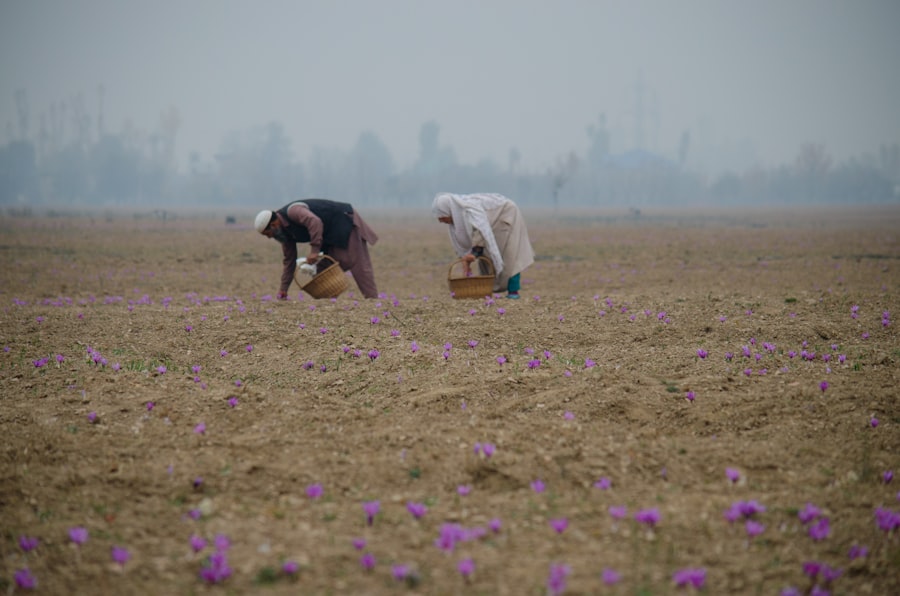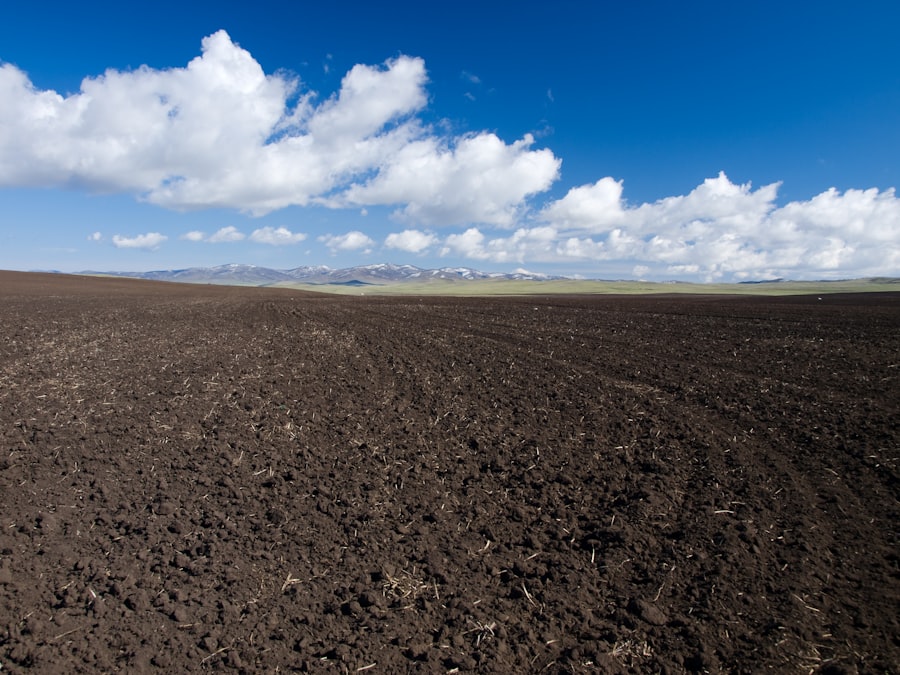Fallow ground refers to land that is intentionally left unplanted for a period of time to allow the soil to recover and regain its fertility. This practice has been utilized for centuries across various agricultural systems, serving as a crucial component in sustainable farming. The concept of fallowing is rooted in the understanding that continuous cropping can deplete soil nutrients, leading to diminished yields and increased vulnerability to pests and diseases.
By allowing the land to rest, farmers can break this cycle of depletion and promote a healthier ecosystem. The duration of fallow periods can vary significantly depending on the climate, soil type, and specific agricultural practices employed. In some regions, a fallow period may last for a single growing season, while in others, it could extend for several years.
During this time, the land may be left completely bare or may be planted with cover crops that serve to enhance soil health. The choice of whether to leave the ground bare or to plant cover crops is often influenced by local environmental conditions and the specific goals of the farmer.
Key Takeaways
- Fallow ground refers to land that is left uncultivated for a period of time to rest and regenerate.
- Fallowing soil is important for maintaining soil health and preventing depletion of nutrients.
- Benefits of fallowing soil include improved soil fertility, better weed control, and reduced pest management needs.
- Fallowing soil helps restore soil fertility by allowing organic matter to decompose and replenish nutrients.
- Water conservation, soil structure improvement, and increased crop yields are all benefits of fallowing soil and practicing sustainable farming.
The Importance of Fallowing Soil
Benefits to Crop Yields and Ecosystem Health
This practice not only the immediate crop yields but also contributes to the overall health of the ecosystem.
Soil Moisture Levels</h3Fallowing allows for natural processes such as rain infiltration and organic matter decomposition to occur, which can enhance moisture retention in the soil.
Importance in Water-Scarce Regions
This is particularly important in areas where water scarcity is a concern, as improved moisture levels can lead to better crop performance in subsequent planting seasons.
Benefits of Fallowing Soil

The benefits of fallowing soil extend beyond mere nutrient replenishment; they encompass a wide range of ecological and agricultural advantages. One significant benefit is the reduction of soil erosion. When land is left fallow, especially when covered with vegetation, it is less susceptible to wind and water erosion.
This protective layer helps maintain the integrity of the soil structure and prevents the loss of valuable topsoil, which is essential for plant growth. Additionally, fallowing can enhance biodiversity within agricultural landscapes. By allowing certain areas to rest, farmers create habitats for various organisms, including beneficial insects and microorganisms that contribute to soil health.
This increased biodiversity can lead to natural pest control mechanisms, reducing the need for chemical pesticides and promoting a more balanced ecosystem. The presence of diverse plant species during fallow periods can also improve pollination rates for crops planted in adjacent fields.
Restoring Soil Fertility
One of the primary objectives of fallowing is to restore soil fertility. Over time, continuous cropping can deplete essential nutrients such as nitrogen, phosphorus, and potassium from the soil. Fallowing provides an opportunity for these nutrients to be replenished naturally through processes such as nitrogen fixation by legumes or organic matter decomposition.
When cover crops are used during fallow periods, they can contribute significantly to nutrient cycling by adding organic matter back into the soil. In addition to nutrient replenishment, fallowing allows for the natural buildup of soil organic matter, which is crucial for maintaining soil health. Organic matter improves soil structure, enhances moisture retention, and provides a habitat for beneficial microorganisms.
As organic matter decomposes, it releases nutrients slowly over time, ensuring that crops have access to essential elements throughout their growth cycle. This gradual release of nutrients helps prevent nutrient leaching and promotes sustainable agricultural practices.
Weed Control and Pest Management
Fallowing serves as an effective strategy for weed control and pest management in agricultural systems. By leaving land unplanted for a period, farmers can disrupt the life cycles of weeds that compete with crops for resources. Many weeds thrive in disturbed soils; therefore, allowing the land to rest can reduce their prevalence significantly.
Additionally, when cover crops are planted during fallow periods, they can outcompete weeds for sunlight and nutrients, further suppressing their growth. Pest management is another critical aspect of fallowing. Continuous cropping can lead to an increase in pest populations that thrive on specific crops.
By rotating crops and incorporating fallow periods into their management practices, farmers can break pest cycles and reduce their populations naturally. This approach minimizes reliance on chemical pesticides and promotes a healthier agricultural environment. Furthermore, diverse plantings during fallow periods can attract beneficial insects that prey on pests, enhancing natural pest control mechanisms.
Water Conservation

Water conservation is an increasingly pressing concern in agriculture due to climate change and growing water scarcity issues worldwide. Fallowing plays a vital role in conserving water resources by improving soil moisture retention and reducing evaporation rates. When land is left undisturbed or planted with cover crops during fallow periods, it allows for better infiltration of rainwater into the soil profile.
This process helps recharge groundwater supplies and ensures that moisture is available for future crops. Moreover, healthy soils with high organic matter content have improved water-holding capacity. The presence of organic matter creates pore spaces within the soil structure that facilitate water retention and drainage.
As a result, farmers who implement fallowing practices can benefit from enhanced water availability during critical growing periods, reducing their dependence on irrigation systems and promoting more sustainable water use.
Soil Structure Improvement
The physical structure of soil is fundamental to its health and productivity. Fallowing contributes significantly to improving soil structure by allowing natural processes such as aggregation and compaction relief to occur. When land is cultivated continuously, it can become compacted due to machinery traffic and foot traffic from livestock or workers.
This compaction restricts root growth and limits water infiltration, leading to poor crop performance. During fallow periods, especially when cover crops are utilized, soil structure can improve dramatically. The roots of cover crops penetrate the soil, creating channels that enhance aeration and drainage while also preventing compaction.
Additionally, as these plants die back and decompose, they contribute organic matter that binds soil particles together into aggregates. These aggregates improve porosity and create a more favorable environment for root development and microbial activity.
Nutrient Cycling and Soil Health
Nutrient cycling is a critical process that sustains soil health and fertility over time. Fallowing facilitates this process by allowing nutrients to be replenished naturally through biological activity in the soil ecosystem. During fallow periods, microorganisms break down organic matter from previous crops or cover crops, releasing essential nutrients back into the soil matrix.
This natural cycling ensures that nutrients are available for subsequent crops without the need for synthetic fertilizers. Furthermore, diverse plantings during fallow periods can enhance nutrient cycling by introducing different root structures and exudates into the soil environment. For instance, deep-rooted plants can access nutrients from deeper soil layers that shallow-rooted crops cannot reach.
As these plants die back or are incorporated into the soil as green manure, they contribute a wider range of nutrients that benefit future crops. This holistic approach to nutrient management promotes long-term soil health and reduces reliance on external inputs.
Increased Crop Yields
The ultimate goal of implementing fallowing practices is often to increase crop yields over time. By allowing soils to recover their fertility and improve their structure through rest periods, farmers can achieve higher productivity in subsequent planting seasons. Research has shown that fields that undergo regular fallowing tend to produce more robust crops with better resistance to diseases and pests compared to continuously cropped fields.
In addition to direct yield improvements from enhanced soil health, fallowing can also lead to better crop quality. Healthy soils produce stronger plants with improved nutrient profiles, resulting in higher-quality produce that meets market demands more effectively. This increase in both quantity and quality can significantly impact farmers’ profitability while promoting sustainable agricultural practices that benefit the environment.
Carbon Sequestration
Carbon sequestration refers to the process of capturing atmospheric carbon dioxide (CO2) and storing it in solid or liquid form within soils or vegetation. Fallowing practices contribute positively to carbon sequestration by enhancing soil organic matter content through natural processes such as decomposition and root growth from cover crops. As organic matter accumulates in the soil during fallow periods, it acts as a carbon sink that helps mitigate climate change by reducing greenhouse gas concentrations in the atmosphere.
Moreover, healthy soils with high organic matter content are more resilient to climate fluctuations and extreme weather events.
They are better equipped to retain moisture during droughts while also preventing runoff during heavy rainfall events.
By promoting carbon sequestration through fallowing practices, farmers not only contribute to climate change mitigation but also enhance their own resilience against changing environmental conditions.
Sustainable Farming Practices
Incorporating fallowing into agricultural systems aligns with sustainable farming practices aimed at preserving natural resources while maintaining productivity.
Sustainable agriculture emphasizes practices that protect the environment, promote biodiversity, and ensure economic viability for farmers over the long term.
Fallowing serves as a cornerstone of these principles by fostering healthy soils that support diverse ecosystems.
Farmers who adopt fallowing practices often find themselves better equipped to face challenges such as climate change, pest outbreaks, and market fluctuations. By prioritizing soil health through rest periods and nutrient cycling strategies, they create resilient farming systems capable of adapting to changing conditions while minimizing environmental impacts. Ultimately, fallowing represents not just a method of managing land but a holistic approach to agriculture that seeks harmony between productivity and ecological stewardship.
If you are interested in learning more about soil health and gardening practices, you may also want to check out this article on the best fertilizer for arborvitae trees. This article provides valuable information on how to properly nourish and care for these beautiful trees.
FAQs
What is fallow ground?
Fallow ground refers to soil that is left unplanted and unproductive for a period of time, typically a growing season or longer. This practice is often used in agriculture to allow the land to rest and replenish its nutrients.
Are there any benefits of fallowing soil?
Fallowing soil can have several benefits, including allowing the soil to regain its fertility, reducing soil erosion, controlling weeds and pests, and conserving water. Fallowing can also break the cycle of certain plant diseases and pests, and improve soil structure.
How does fallowing soil help to replenish nutrients?
When soil is left fallow, it allows organic matter to decompose and release nutrients back into the soil. This process can help to replenish essential nutrients such as nitrogen, phosphorus, and potassium, which are necessary for plant growth.
What are some common methods of fallowing soil?
Common methods of fallowing soil include leaving the land unplanted and allowing natural vegetation to grow, planting cover crops to protect and enrich the soil, and using crop rotation to alternate between planting and fallowing periods.
Is fallowing soil a sustainable agricultural practice?
Fallowing soil can be a sustainable agricultural practice when used in conjunction with other soil conservation and fertility-building techniques. It can help to maintain soil health and productivity over the long term, especially in areas with intensive agricultural production.

